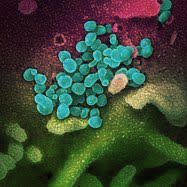Which impact for proton pump inhibitors in SARS-CoV-2 pneumonia

All claims expressed in this article are solely those of the authors and do not necessarily represent those of their affiliated organizations, or those of the publisher, the editors and the reviewers. Any product that may be evaluated in this article or claim that may be made by its manufacturer is not guaranteed or endorsed by the publisher.
Accepted: 8 June 2021
Authors
Identification of risk factors for severe outcome of SARS-CoV-2 infection is an important issue in COVID-19 management. Much attention has been focused on comorbidities as well as drugs taken by patients. Usage of proton pump inhibitors (PPIs) appears to potentially influence disease course. These drugs are known to reduce stomach acid and also modulate the immune system. Their use, prior to and during COVID-19 infection, seems to predispose to the development of more severe pneumonia and therefore to a greater risk of mortality. Instead, the use of histamine receptor 2 antagonists (H2RAs) seems to be associated with a better outcome in patients with COVID-19, in terms of symptoms, risk of intubation and death. As PPIs are essential for treatment of many disorders, usage of these drugs should be balanced considering the benefits and risk ratio, in order to guarantee their correct use for the necessary time. It remains to be clarified whether the detrimental effects, in terms of COVID-19 severe outcome, are due to PPIs or to the underlying disease for which they are administered. New controlled-randomized trials are required to better understand their impact in SARS-CoV-2 infections.
*Vanvitelli/Monaldi COVID Group: Adriano Cristinziano, Carolina Delle Donne, Cecilia Calabrese, Fabio Perrotta, Filippo Scialò, Francesco Lassandro, Gennaro Mazzarella, Giorgio Paoli, Leonardo De Luca, Maria Galdo, Miriam Buonincontro, Roberta Cianci, Rosalba Donizzetti, Stefano Sanduzzi Zamparelli, Tullio Valente, Vito D’Agnano, Vittorio Bisogni
Department of Pneumology and Oncology AORN dei Colli “Monaldi” Hospital, Naples
Vanvitelli COVID-19 Unit, Infectious Disease Department, University of Campania "L. Vanvitelli", Naples
Department of Pneumology and Oncology, AORN dei Colli, “Monaldi” Hospital, Naples
Department of Pneumology and Oncology, AORN dei Colli, “Monaldi” Hospital, Naples
Department of Pneumology and Oncology, AORN dei Colli, “Monaldi” Hospital, Naples
Department of Pneumology and Oncology, AORN dei Colli, “Monaldi” Hospital, Naples
Department of Pneumology and Oncology, AORN dei Colli, “Monaldi” Hospital, Naples
Department of Pneumology and Oncology, AORN dei Colli, “Monaldi” Hospital, Naples
Department of Pneumology and Oncology, AORN dei Colli, “Monaldi” Hospital, Naples
Department of Pneumology and Oncology AORN dei Colli “Monaldi” Hospital, Naples
Vanvitelli COVID-19 Unit, Infectious Disease Department, University of Campania "L. Vanvitelli", Naples
How to Cite

This work is licensed under a Creative Commons Attribution-NonCommercial 4.0 International License.






